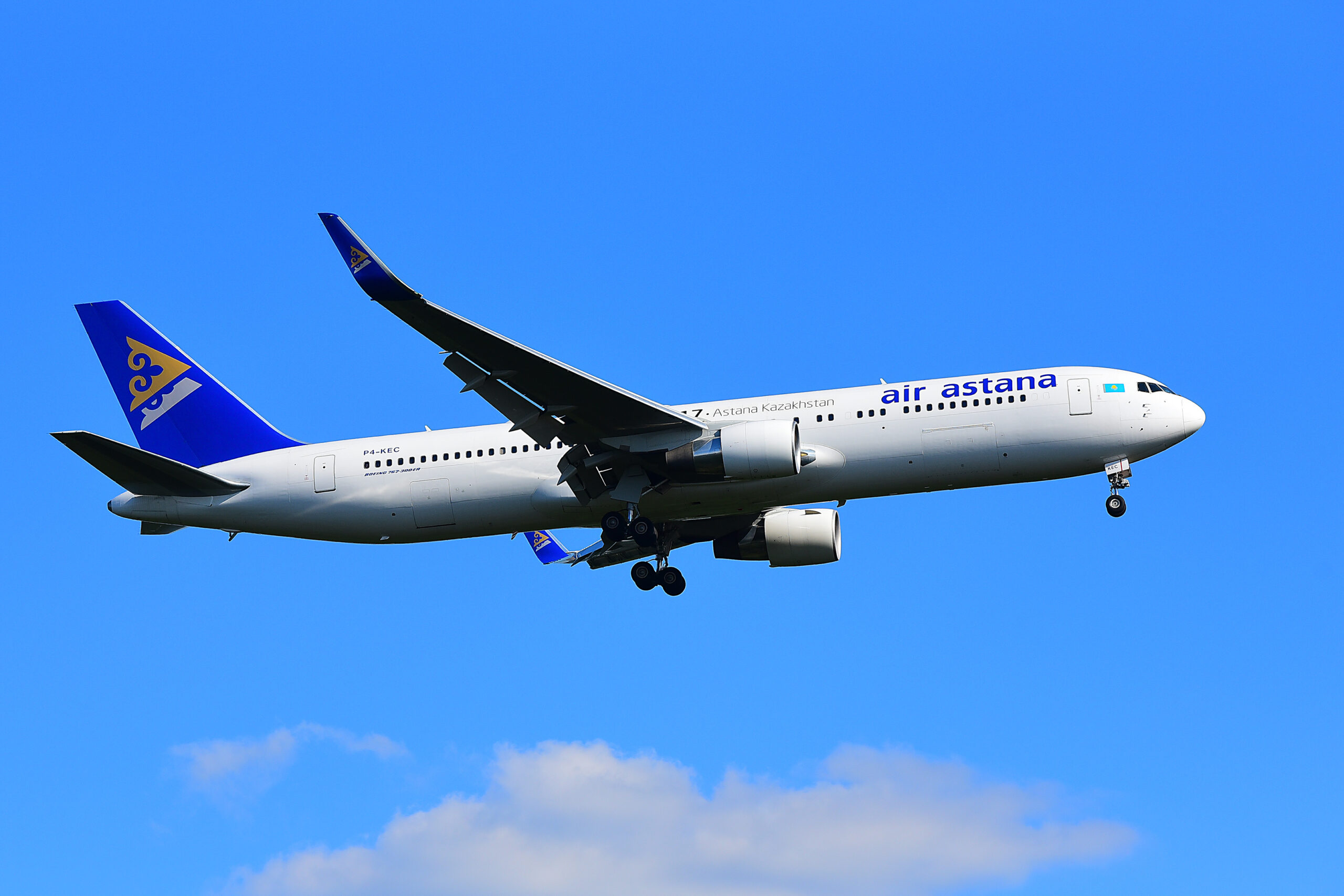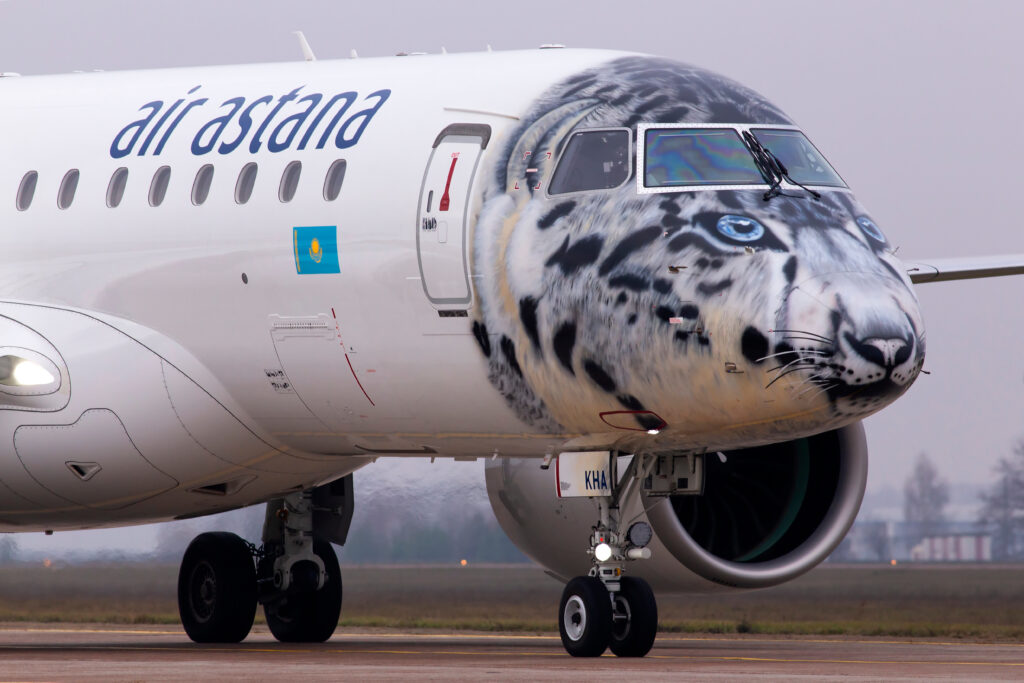The Almaty-based Air Astana has been an AirlinePros client in the United States and Canada for over 15 years now and it has been a relationship that has only gotten stronger over the years. In this exclusive interview with AirWaves, Richard Ledger, Senior Regional Manager, Air Astana, tells us how the airline managed the pandemic, the war in Ukraine and other turbulences and how their own low-fare entrant has stimulated market demand in the flight towards normalcy.

1) How do you cope with the stoppage of flights to Russia, one of your most popular routes?
Moscow historically has been one of our most popular destinations and we needed to react quickly to compensate. The last two-and-a-half years taught us agility, and how to pivot quickly to tap alternative revenue streams. One of our strategies was to develop leisure ‘lifestyle routes’, predominately for the local market.
Having opened flights to the Maldives, Phuket, Colombo, and Podgorica during the pandemic, we have followed this up recently with new routes between Almaty and Nur Sultan and Crete for this summer and will soon announce flights between Almaty and Bodrum. This summer we return to daily B767-300ER operations between Nur Sultan and Frankfurt. With the land borders open between Russia and Kazakhstan, and less incumbent capacity between Russia and Europe, we may expect stronger demand on this particular route. Flights to London have been resumed in March and from May will operate direct between Almaty and London Heathrow, (with a technical stop in Aktau).
2) Air Astana was part of the repatriation of Kazakhstan nationals from Ukraine when the hostilities began in February this year. What does it feel like to have been a part of – and pulled off – an operation of such magnitude and possible high risk?
The events in Ukraine are truly tragic and of course it was important to repatriate our passengers who were in Ukraine at the outbreak of the conflict, as well as those Kazakh national residents in Ukraine. We had extraordinary support from the Embassy of the Republic of Kazakhstan and specifically from the Ambassador, His Excellency Darkhan Kaletaev.
Operationally, all risks were minimized given that our collection point was in Katowice, Western Poland, and we followed stringently all the NOTAMS on airspace closure. Be that as it may, courage was indeed demonstrated by our staff, including our President and CEO, Peter Foster, and our Vice-President Ground Services, Alexandr Neboga, who relocated to Kyiv in the days leading up to the conflict to coordinate the evacuation.

3) Your airline is one of the very few in the world which overcame the pandemic related slowdown with neither government nor shareholder subsidy. And did this a lot quicker than expected. How did you do that? There could be a lesson here for other airlines.
I would say a fair mix of the desire of our staff, strong management, local demand, and a reasonable sized portion of good luck. The playbook demands airlines to immediately cut costs; which we did quickly, both in terms of our operating expenses; as well non-operating expenses and overhead. That said, we were able to manage the manpower without the whole-scale redundancies seen broadly across the industry. We had an obsessive attention to detail, to the extent that to this day, the senior management reviews the financial performance of each and every flight at a daily review meeting held each morning. At the first signs of structural changes in demand, capacity is adjusted upwards or downwards. With borders closed, but still a strong propensity to travel within the country, domestic demand has been strong, having been stimulated by the developing network of our low-fares subsidiary FlyArystan. Similarly, where international borders have opened, we have been quick to allocate capacity, specifically to leisure destinations.
4) This turnaround almost sounds like a heritage, even: incorporated in 2001, a decade later, Air Astana was described by the Center for Asia Pacific Aviation in January 2012 as having ‘performed better in its first decade than any other start-up carrier. What lessons from experience could you share with other start-up airlines?
This year Air Astana celebrates its 20th Anniversary, so it seems a little divergent to consider Air Astana as a startup airline these days! Over the years we have benefited by not picking up bad habits or legacy practices which often strangle innovation. When LCC started to unbundle for example, we looked at our offerings and considered how this is relevant to our specific markets? Such thinking allowed us to maintain our position as a full-service carrier but encouraged us to offer choice and a broader retail experience to our customers; whether it was with our Branded Fares or the range of ancillary products we offer. The new post-pandemic era will be characterized, not by price and schedule as defined by comparison sites, but rather by the levels of service (and intuitive online functionality) an airline can provide. Allocating resources in this field would be a smart move.
5) Air Astana also boasts one of the youngest fleets in the world. While this is instrumental in keeping the fuel and maintenance costs low as well as to enhance flier experience, it also means retiring several aircrafts as well. How does this benefit the bottom line?
The lower operating cost of the A321neo LR compared to the B757-200 is clear and certainly improves the economics on all the routes they operate, and therefore the bottom line. As you allude to in your question, it’s the improved customer experience that will have customers coming back for more. We believe we have one of the best cabin configurations of A321neo LR is in the sky at the moment; with 16 flat-bed Business Class seats, mood lighting, inflight entertainment across both cabins and award-winning service.
6) Your ultra-low-cost subsidiary FlyArystan has been chiefly responsible in making Kazakhstan one of the fastest growing domestic aviation markets in the world. What are your thoughts on this venture?
Indeed, FlyArystan has contributed significantly to the growth in the domestic and regional markets to, from, and within Kazakhstan. Since the creation of this brand, it has been true and consistent with its ideology in providing the lowest possible fares.
I would re-phrase your question to ultra-low fare airline, as this is core to its principle. Carriers can be low-fare carriers, and still provide a high-quality service in terms of safety, punctuality, cleanliness and customer service. The low-cost tag seems to come with some unwanted baggage in some markets and it certainly is not representative of FlyArystan.
7) Does FlyArystan cannibalize Air Astana’s share of the domestic market? What kind of mechanism ensures that both airlines operate to generate maximum revenues?
To the contrary, the low-fare entrant to the Kazakh market has stimulated domestic demand for FlyArystan, Air Astana, and other players in the market. Some routes FlyArystan operates independently from Air Astana; and on some routes both brands operate. The demographic of the respective carriers is somewhat different, however. Time-sensitive business travelers demand optimal departure times, whereas those passengers who consider price as the driver to their decision-making process have greater flexibility. These types of considerations help ensure we serve the whole market and generate maximum revenues.
8) In July 2018, Air Astana was recognized for 4 Star Service Excellence, retaining the accolade of the ‘Best Airline in Central Asia and India’ in the Skytrax World Airline Awards – for the 7th consecutive year. In an interview to an online travel news portal some time ago, you also spoke at length about the experience of an Air Astana flier. Can you please elaborate on some of these ‘experiences’ that make you stand out from the others?
Given the impact that Covid19 has had on our industry, much of aviation commentary can be classified as pre or post pandemic. The Covid19 era has however helped solidify our understanding of ‘customer experience’ and what it really means to deliver outstanding service. Over the impacted years we have seen customers who are willing to pay for, and genuinely seek out the best, but not necessarily the cheapest, solution to their travel needs. Customer experience for an airline is more than what happens onboard a flight. It considers the whole passenger journey from the time of travel inspiration, through the booking and pre-departure window; at check-in, boarding, onboard and when bags are delivered at the other end. It encompasses pre and post flight communication and the consistency of that communication across multiple channels and touchpoints. Those airlines that get this right will have customers prepared to pay higher fares and repeat their business time and time again. It’s an ongoing process to continually improve these areas, and in recognition of this, a matrix organization of business units, coordinated under the new Air Astana Training Academy has been created and tasked directly with this project.

9) In an arrangement with the government, in 2018 passengers from some countries were allowed a visa-free stopover for 72 hours in Kazakhstan. Do you think visa-free travel will be used more by countries to encourage the revival of air travel?
Yes, and we are delighted that Kazakhstan re-adopted the visa-free program at the beginning of the year. And in fact, to correct you here slightly, Kazakhstan has re-adopted its visa-free entrance program for stays in Kazakhstan for up to one month for most western nationalities, including the USA, Canada and the UK. The full list of countries this applies to is available on www.airastana.com. You refer to a 72-hours visa which pre-pandemic was available for Chinese and Indian citizens. We continue to lobby for the reintroduction of this specific program.
10) Would you have any other suggestions that may help airlines’ find their mojo back in the post-pandemic period?
Invest in your customer. Across many sectors we have seen some companies flourish and these have tended to be those who have made communication accurate, timely and simple. Customers want answers to their queries and will jump online to get those answers. If the technology cannot be configured, make sure your in-person team is available when the customer wants to speak with them. That, and manage your capacity carefully!
11) Your new routes the last year and half have been mostly holiday destinations including Maldives, Colombo, Phuket and Goa. Is this a deliberate long-term shift in focus to point-to-point leisure traffic to enhance tourism to Kazakhstan or purely due to the sluggish growth in business traffic?
It was our direct response to the global pandemic, where international travel to or via Kazakhstan was restricted to some degree. Certainly, there has been (and even to this day) real hesitancy in using connecting network flights across the industry. Combined with the strong propensity to travel from the local market this strategy has been very successful.
Business traffic is already showing encouraging growth and no doubt we will allocate our resources in response. That said, the overwhelming success of some of these ‘lifestyle’ routes means that they will become a structural part of product lines in the years to come.
12) Where do you see the future growth of Air Astana? Any other trend in travel do you think is coming up?

International growth will come from China when the current restrictions are lifted. When this latent demand is released, Kazakhstan remains ideally positioned to capitalize. We have already seen a strong recovery since flights have been re-established with India and I expect this to continue. Central Asia remains underserved, and this market will remain fundamental to Air Astana’s success. Tourism to Kazakhstan and Central Asia remains to some extent niche, especially from Western Europe and the US. With the introduction (12 May) of direct flights from London to Almaty, and the chance to fly from London to Aktau in Mangystau direct and non-stop, opportunities now exist for discretionary leisure travelers from Europe to access some of the most inspiring destinations in the region.
And as for other trends, while the corporate travel market remains sluggish, I see that airlines will be doing everything possible to upsell passengers from the economy cabin to the business class cabin. Structural pricing and digitally facilitated intuitive upgrade offers are going to be important in driving success in this.
